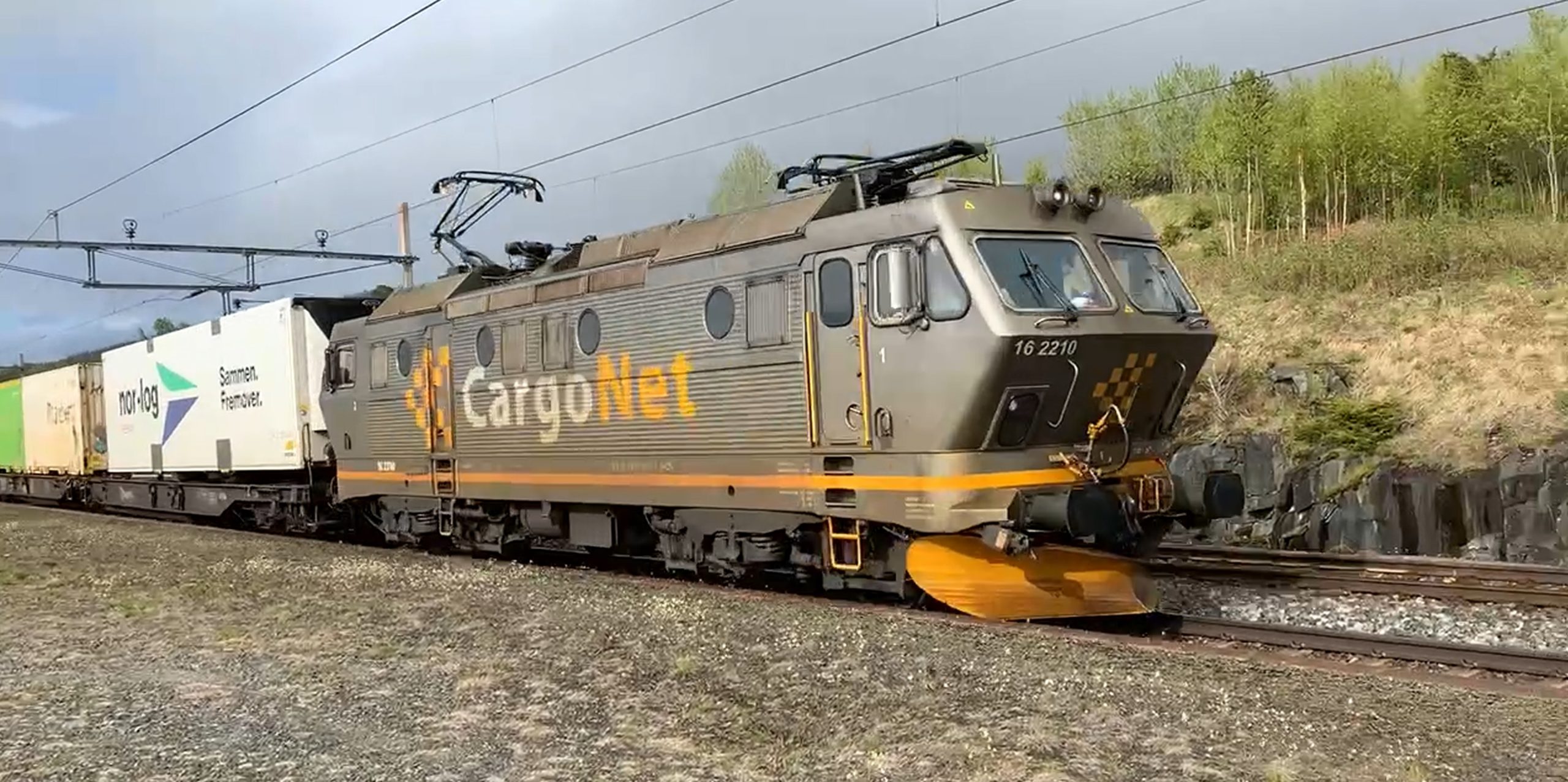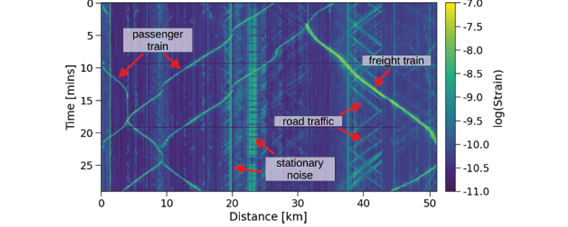DAS TECHNOLOGY
Railway
Railway tracks often host fiber communication cables alongside electrical lines, aiding locomotives with power. These cables, whether underground or overhead, are pivotal for DAS technology. By synthesizing them into linear arrays of virtual sensors, DAS monitors traffic and events along the railway. Variances in data signatures unveil train types and track activity, even discerning between trains, cars, and human presence. Additionally, if events emit acoustic energy, the fiber acts as a sensing element, detecting them. In railway contexts, DAS proves invaluable for various applications.

Train position and speed monitoring:
• DAS can continuously monitor extended railway infrastructures over tens and hundreds of kilometers.
• The backscattered light from in the fiber optic cable along the rail tracks can be analyzed real-time and provide information of train positions, directions, type of trains, speed and direction.

Railway safety and security:
• DAS can contribute to enhanced safety by detecting anomalies and disturbances along the tracks.
• It can identify issues such as track deformations, ground movement, or unauthorized intrusions.
• Early detection of anomalies allows for timely maintenance and prevention of accidents.

Track condition assessment:
• DAS can assess the condition of rail tracks by monitoring vibrations and strain.
• It can identify changes in tension or compression within the fiber optic cable caused by track defects, such as cracks, misalignments, or settlements.
• Regular monitoring helps prevent track failures and ensures smooth train operations.

Trackside security and surveillance:
• DAS can serve as an intelligent security system along rail tracks.
• It detects any unusual activity, such as trespassing, vandalism and theft.
• Alerts to be sent to security personnel for immediate action.

Environmental monitoring:
• DAS can monitor environmental factors affecting rail infrastructure.
• It detects ground movements due to natural events like landslides, earthquakes, or soil erosion.
• Early warnings allow rail operators to take prentice measures.

Detection of wheel and bearing defects:
• DAS can identify irregularities in train wheels (flat wheels).
• Abnormal vibrations or acoustic patterns indicate potential defects.
• Timely maintenance reduces wear and tear, minimizing downtime.

Tunnel monitoring:
• In tunnels, DAS monitors structural integrity, rock stability, and water leakage.
• It detects any changes in acoustic signals caused by tunnel deformations or cracks.
• Ensures safe passage of trains through tunnels.

Trackside wildlife detection:
• DAS can detect wildlife presence near rail tracks to prevent wildlife-train-collisions (WTC).
• Alerts can prevent wildlife-train-collisions (WTC), ensuring both safety and wildlife conservation.


Moving RMS of DAS signal (“waterfall plot”) displaying different events along a railway section.

